

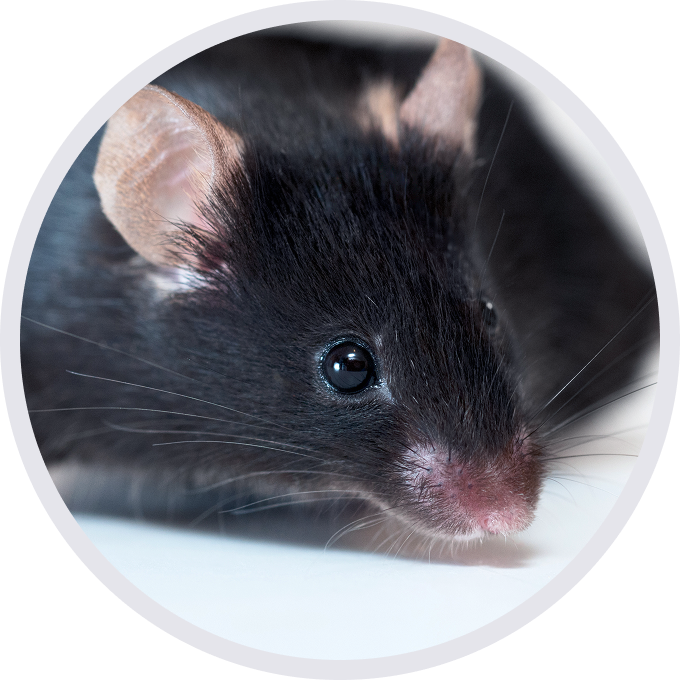
C57BL/6N-C3tm2(C3)Bcgen/Bcgen • 112467
| Product name | B-hC3 mice |
|---|---|
| Catalog number | 112467 |
| Strain name | C57BL/6N-C3tm2(C3)Bcgen/Bcgen |
| Strain background | C57BL/6N |
| Aliases | ASP; C3a; C3b; AHUS5; ARMD9; CPAMD1; HEL-S-62p |
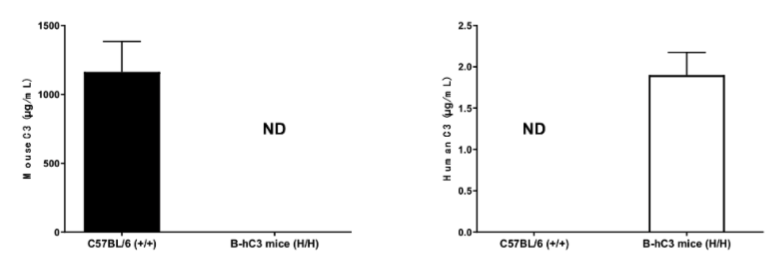
Strain specific C3 expression analysis in homozygous B-hC3 mice by ELISA. Serum were collected from wild-type mice (+/+) and homozygous B-hC3 mice (H/H), and analyzed by ELISA with species-specific anti-C3 antibody. Mouse C3 was detectable in wild-type mice. Human C3 was detectable in homozygous B-hC3 mice.
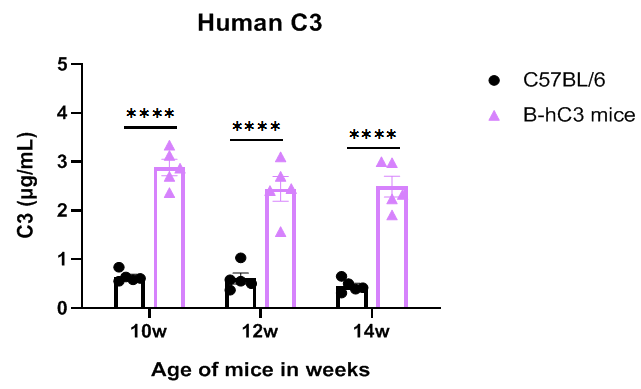
train specific C3 expression analysis in homozygous B-hC3 mice by ELISA. Serum were collected from 10, 12 and 14-week-old homozygous B-hC3 mice (H/H), and analyzed by ELISA with anti-C3 ELISA kit. Human C3 was detectable in homozygous B-hC3 mice. The expression of human C3 did not change significantly with the increase of age. (*p<0.05,***p<0.001, ****p<0.0001)
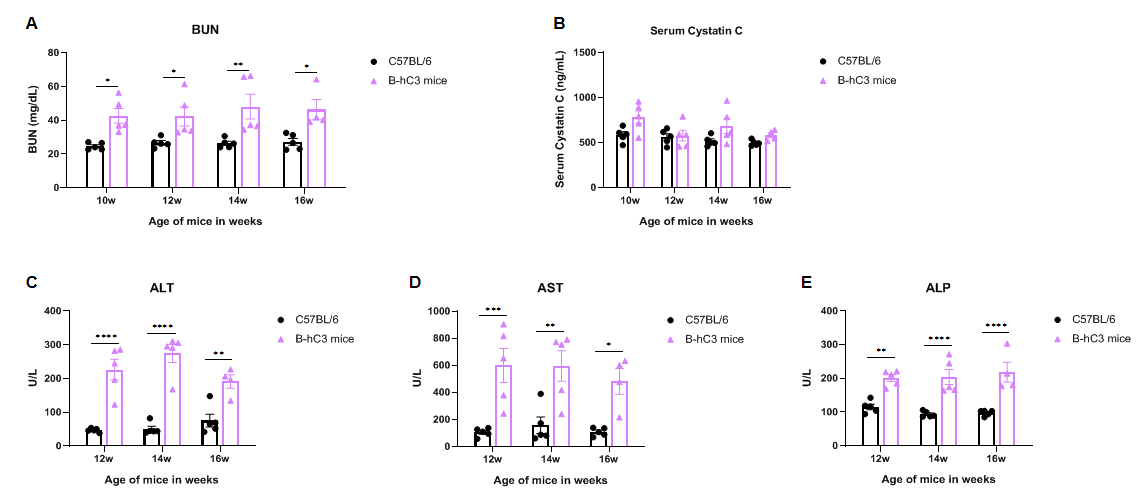
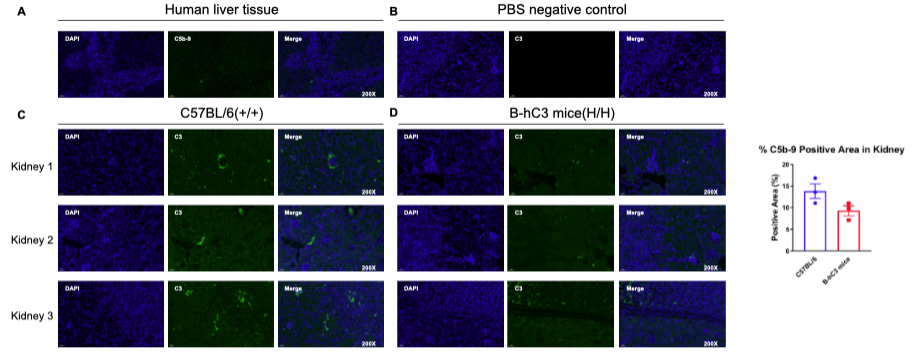
Staining of C5b-9MAC in hC3 and WT mice. The C5b-9 MAC were stained in the kidneys of both the WT mice(C) and B-hC3 mice(D). These results were not consistent with the data in the literature. In theory, the kidneys of wild-type mice have very few deposits of the C5b-9 MAC.

Histopathology of the livers, kidneys and brains from the hC3 and WT mice. Compared with the WT mice, no significant lesions were observed in the kidney, liver or brain from the hC3 mice.